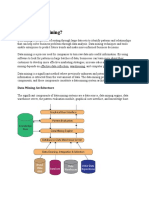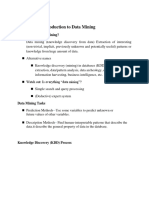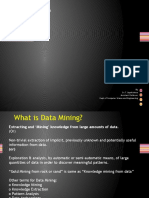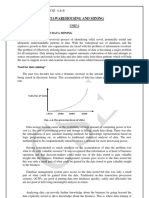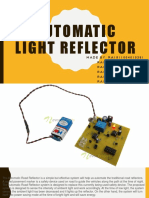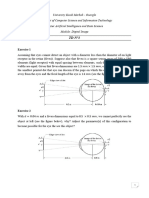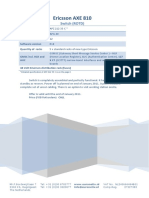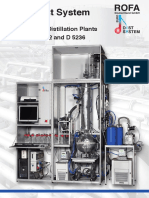0% found this document useful (0 votes)
10 views11 pagesData Mining
Data mining is the process of extracting valuable information from large datasets using techniques from statistics, machine learning, and database systems. It involves various algorithms for classification, clustering, regression, and association rule learning, among others, to identify patterns and trends. The document outlines the steps of knowledge discovery in data mining, the types of data that can be mined, and emphasizes the importance of data mining in enhancing decision-making and competitiveness in various industries.
Uploaded by
helly251102Copyright
© © All Rights Reserved
We take content rights seriously. If you suspect this is your content, claim it here.
Available Formats
Download as DOCX, PDF, TXT or read online on Scribd
0% found this document useful (0 votes)
10 views11 pagesData Mining
Data mining is the process of extracting valuable information from large datasets using techniques from statistics, machine learning, and database systems. It involves various algorithms for classification, clustering, regression, and association rule learning, among others, to identify patterns and trends. The document outlines the steps of knowledge discovery in data mining, the types of data that can be mined, and emphasizes the importance of data mining in enhancing decision-making and competitiveness in various industries.
Uploaded by
helly251102Copyright
© © All Rights Reserved
We take content rights seriously. If you suspect this is your content, claim it here.
Available Formats
Download as DOCX, PDF, TXT or read online on Scribd
/ 11













